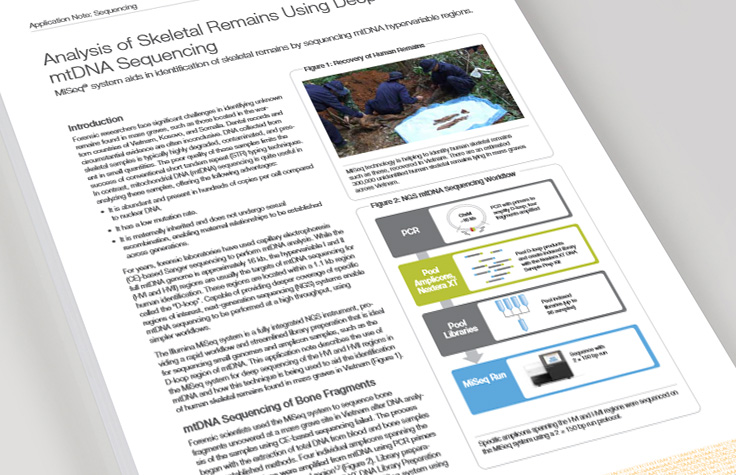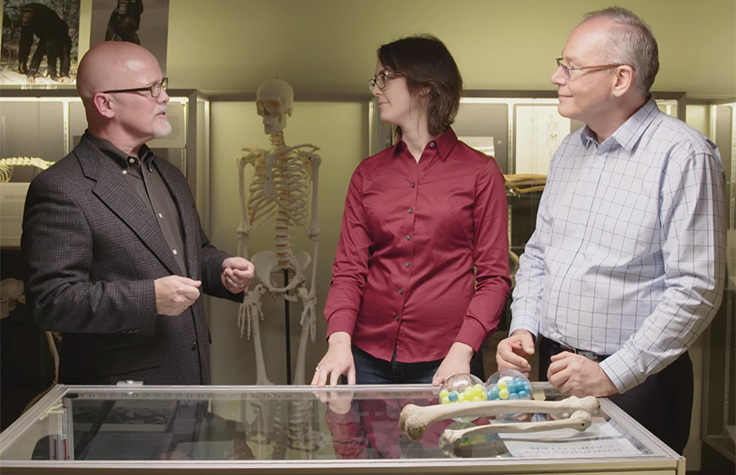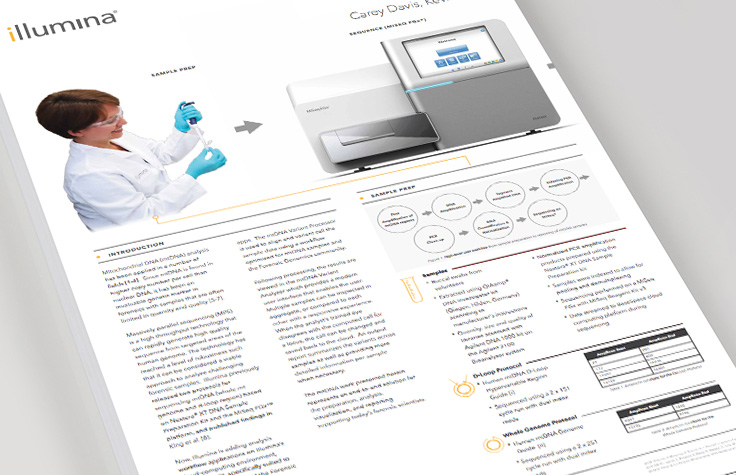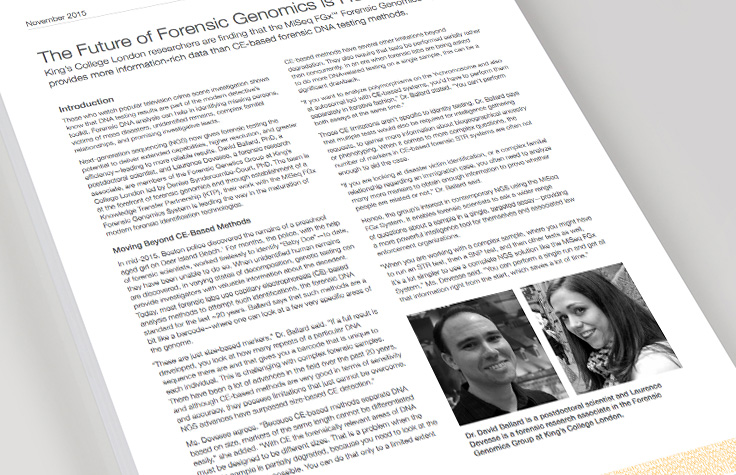Disaster Victim Identification
Introduction to Disaster Victim Identification
Genetic analysis can help identify victims of mass fatalities when traditional methods cannot be used, or fail to yield conclusive results. Because next-generation sequencing (NGS) has no relevant limit on the number of loci that can be simultaneously analyzed, you can extract the maximum amount of information from evidence or a known reference sample.
Conventional disaster victim identification methods include fingerprints and odontology. Labs also use molecular methods such as DNA analysis and mitochodrial DNA (mtDNA) sequencing with capillary electrophoresis. Sample types processed after a mass fatality event can include bone fragments, tissue, various personal effects containing DNA, and buccal swabs from relatives.

Multiple DNA Analyses Simultaneously, with < 1 ng Sample
The goal of DNA testing for disaster victim identification is to extract as much genetic information as possible from highly compromised samples. With traditional DNA testing using capillary electrophoresis, choosing one assay often precludes the ability to perform another. Analysts must evaluate the evidentiary material and decide which assay method to perform.
With Illumina NGS technology, these tradeoffs are eliminated. NGS systems such as the MiSeq FGx Forensic Genomics System have no relevant limit on the number of loci that can be analyzed on the same sample in the same run. Every locus can be assayed, including core sets of autosomal, Y and X STRs, several categories of SNPs, the mtDNA genome, and other classes of polymorphisms.
Workflow for Disaster Victim Identification
For disaster victim identification, Illumina offers a complete, fully validated DNA-to-data solution designed for forensic genomics. Our recommended workflow on the MiSeq FGx System utilizes the ForenSeq DNA Signature Prep Kit or the Nextera XT DNA Library Prep Kit.
Achieve high resolution and exceptional accuracy from as little as 1 ng of DNA—Even with complex mixtures or degraded DNA. The inherent sensitivity of Illumina chemistry helps detect minor components that might go undetected by conventional STR and CE analysis.
Click on the below to view products for each workflow step.
We recommend using your current DNA extraction and quantitation methods.
ForenSeq DNA Signature Prep Kit (for nuclear DNA)
Assay approximately 200 genetic markers in a single test. Includes all reagents to prepare sequencing libraries from forensic DNA samples.
Nextera XT DNA Library Prep Kit (for mtDNA)Prepare sequencing-ready libraries for small genomes like mitochondrial DNA in less than 90 minutes.
First fully validated sequencing system for forensic genomics.
Pre-filled, ready-to-use reagent cartridges, specifically designed for the MiSeq FGx System. Use for sequencing nuclear DNA libraries.
MiSeq Reagent Kit v2Pre-filled, ready-to-use reagent cartridges, for running the MiSeq FGx System in RUO mode. Use for sequencing mtDNA libraries.
Analyze and interpret a wide range of forensics casework and database samples.
MyFLq BaseSpace AppMy F(orensic) L(oci) q(ueries) - Open source, straightforward analysis tool for forensic DNA samples and profile generation.
Enables streamlined variant analysis of d-loop and whole mitochondrial DNA sequence data.
mtDNA Variant Analyzer BaseSpace AppEnables simplified visualization of d-loop and whole mitochondrial DNA sequence data.
Interested in receiving newsletters, case studies, and information on forensics? Enter your email address.
Additional Resources

Deep Sequencing mtDNA
MiSeq system aids in identification of skeletal remains by sequencing mtDNA hypervariable regions.

The Power of mtDNA Heteroplasmy
Hear Mitch Holland of Penn State explain how high-throughput sequencing is helping us realize the power of mtDNA heteroplasmy.

mtDNA Poster
Improved Human MtDNA Analysis using Next-generation Sequencing and Cloud-based Computing and Storage.

Future of Forensic Genomics
Researchers use NGS to obtain more information-rich data and answer more complex forensic questions.